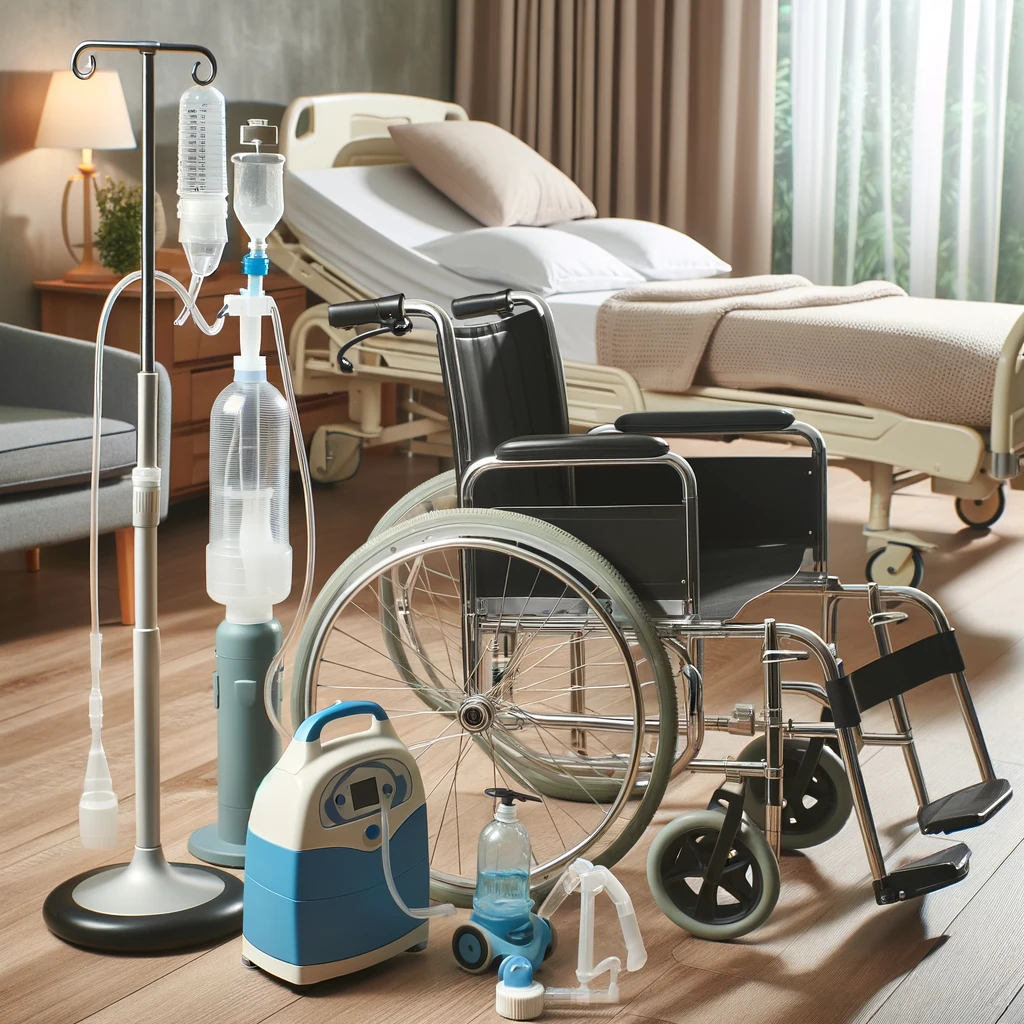Durable Medical Equipment Billing Guide Simplified for Healthcare Providers
This durable medical equipment billing guide ensures patients receive essential tools like wheelchairs or oxygen tanks without financial barriers. This process connects healthcare providers, insurers, and patients to facilitate access to life-enhancing equipment. Keep reading to discover how DME billing works and why it’s a cornerstone of modern healthcare.
KEY TAKEAWAYS:
- Durable Medical Equipment Billing is essential for patient access to necessary equipment.
- It involves complex insurance and coding processes.
- Understanding Medicare and private insurance requirements is key.
- Accurate HCPCS Level II coding ensures proper reimbursement.
- Regular training and updates are crucial for billing staff.
What Would Be Considered Durable Medical Equipment?

Durable Medical Equipment (DME) encompasses a range of items designed to aid patients facing various medical conditions.
DME is characterized by its durability, utility in providing therapeutic benefits to a needy patient, and ability to withstand repeated use.
Common examples include wheelchairs, hospital beds, portable oxygen concentrators, and walkers.
These items play a critical role in enhancing the quality of life for patients, particularly those with long-term or chronic conditions.
The Two Types of DME
Medically Necessary Equipment
The first type of Durable Medical Equipment includes necessary items for a patient’s condition or illness.
This category is often characterized by equipment that directly aids in treating or managing a medical condition, such as insulin pumps for diabetes management.
Assistive Devices
The second type focuses on assistive devices.
These are items that aid in the general well-being and mobility of patients.
Examples include crutches, bath chairs, and specially designed utensils for individuals with limited hand mobility.
While they might not treat a condition directly, they are crucial in improving a patient’s quality of life.
What is Not an Example of Durable Medical Equipment?
While Durable Medical Equipment covers many items, there are specific exclusions.
Items not considered DME include disposable supplies like bandages and gauze, items used for environmental comforts such as air conditioners, and items primarily used for convenience rather than medical necessities.
Understanding these distinctions is key to discerning what qualifies as DME.
Importance of Durable Medical Equipment Billing
Durable Medical Equipment billing is a vital aspect of healthcare financing.
It involves different medical specialties, each with its nuances in billing procedures.
Effective DME billing ensures that patients receive the necessary equipment without financial hiccups.

DME Basics
Reusable and Medically Necessary Equipment
Durable Medical Equipment is designed for repeated use and is deemed medically necessary for patients.
It’s typically used in the patient’s home, highlighting its role in ongoing care.
The durability of DME, providing long-term patient support, is a key feature.
Criteria for Qualifying as DME
There are additional criteria that equipment must meet to be classified as Durable Medical Equipment.
These criteria ensure only essential and suitable equipment is provided under the DME category.
Separate PTAN Number
Requirement for Medicare Billing
Obtaining a separate PTAN number is crucial for DME Medicare billing.
This process is necessary for groups and individual providers to ensure compliance and proper billing practices.
Durable Medical Equipment Billing’s Distinct PTAN
Durable medical equipment billing uses a distinct PTAN number, differentiating it from other Medicare billing processes.
This distinction is vital for proper billing and reimbursement.
DME vs. Demi Post
Medicare’s Terminology for DME
Medicare refers to Durable Medical Equipment as “Demi Post.”
Understanding this terminology is essential for navigating Medicare policies and billing procedures.
CMS (Centers for Medicare & Medicaid Services) offers comprehensive guidelines on DME Billing. Explore their detailed instructions at Medicare DME Billing Guidelines.
Separate PTAN for DME Claims
A separate PTAN is required to enroll and submit DME claims to Medicare.
This distinction ensures that claims for DME are processed accurately and efficiently.
Splitting Medicare Claims
When dealing with Medicare claims, splitting claims between DME and other services is important.
This separation is key to accurate billing and reimbursement.
The ABCDs of Medicare: A Comprehensive Guide for Healthcare Providers
Coverage by Medicare and Commercial Insurance
Medicare Part B and DME Coverage
Straight Medicare Part B covers Durable Medical Equipment and is referred to as DMEPOS.
The Role of Correct Codes in Durable Medical Equipment Billing
The correct codes, including diagnosis codes, are imperative in DME billing.
These codes support the medical necessity and ensure proper processing of claims.
Rental or Purchase Options
There are options, and sometimes requirements, to rent or purchase certain Durable Medical Equipment.
These options offer flexibility for patients and providers in managing DME needs.
Specialties and Durable Medical Equipment Billing
Involvement in Various Medical Specialties
DME billing involves a range of medical specialties, each with unique requirements and codes.
Healthcare providers must be familiar with these specialties’ specific DME billing processes.
Cost and Coverage Considerations for Patients
Considering patients’ cost and coverage options is a significant aspect of DME billing.
Providers must navigate these options to ensure patients receive the necessary equipment without undue financial burden.
Patient Misconceptions
Doctor-Ordered Supplies and Coverage
A common misconception among patients is that all doctor-ordered supplies, including Durable Medical Equipment (DME), are fully covered by insurance.
It’s crucial to clarify that while doctor orders are necessary, they don’t guarantee full coverage.
Coverage vs. Out-of-Pocket Expenses
Understanding the difference between insurance coverage and out-of-pocket expenses is vital in DME.
Patients often need to be aware of the role of deductibles and co-insurance in their overall expenses.
Role of Deductibles and Co-Insurance
Deductibles and co-insurance are significant in Durable Medical Equipment’s financial aspects.
Patients need to understand these terms and how they impact their responsibility towards the cost of DME.
Importance of Billing Knowledge
Checking Contracts with Payers
Providers are urged to diligently check their contracts with payers regarding DME coverage.
This step is crucial to avoid misunderstandings and ensure accurate billing practices.
Value of Knowledgeable Billing Staff
Having knowledgeable billing staff who understand the intricacies of Durable Medical Equipment billing is invaluable.
This expertise can significantly impact the financial health of a practice.
Financial Aspects of DME in the Office
Addressing the financial aspects of maintaining DME supplies in a medical office is essential.
Proper billing and inventory management can prevent financial strain.
Commercial Payers and DME Coverage
Typical Coverage by Commercial Payers
Commercial payers typically cover Durable Medical Equipment, but specifics can vary.
Providers are advised to confirm the details of DME coverage in their specific contracts.
Review your contract with the insurance providers to determine what DME items are covered and what are not essential.
Resources in Payer Portals
Utilizing resources available in payer portals or contacting insurers directly can provide clarity on DME coverage.
These resources are valuable for understanding the nuances of different insurance plans.
DME Billing for Medicare
Enrollment for Durable Medical Equipment Billing
Reminding viewers about the necessity of separate enrollment for DME billing with Medicare is important.
This step is a prerequisite for proper billing and compliance.
Obtaining a Separate PTAN for DME
Highlighting the importance of obtaining a separate PTAN for Durable Medical Equipment reinforces the distinct nature of DME billing in Medicare.
Potential Financial Issues
Providers must be cautious of potential financial issues from billing DME without proper enrollment.
This caution is key to avoiding costly errors.
Specialty-Specific DME
Expertise in DME Billing
Stressing the need for specialized expertise in DME billing, particularly within specific medical specialties, is crucial.
Different specialties have different DME equipment needs.
Hiring a DME Specialist
Advising practices to hire a specialist familiar with the specific DME needs of their specialty can enhance billing efficiency and accuracy.
Key Aspects of Durable Medical Equipment Billing
Insurance Coverage and Patient Communication
Emphasizing the importance of insurance coverage in Durable Medical Equipment (DME) billing is paramount.
Equally crucial is maintaining clear communication with patients about their coverage and responsibilities.
Distinguishing Between Purchase and Rental Options
In DME billing, it’s essential to highlight the significance of distinguishing between options to purchase or rent equipment.
This distinction affects both billing processes and patient choices.
Utilizing Specific CPT Codes and Diagnosis Codes
Using specific CPT and diagnosis codes is a key aspect of DME billing.
These codes ensure accurate and compliant billing for the equipment provided.
The CPT codes for Durable Medical Equipment are specific HCPCS Level II codes that identify the type of equipment provided.
The American Medical Association provides a valuable resource on coding and billing: Healthcare Common Procedure Coding System (HCPCS)

Documentation and Medical Necessity
Need for Detailed and Thorough Documentation
Emphasizing the need for detailed and thorough documentation in DME claims cannot be overstated.
This documentation should comprehensively cover the medical necessity and use of the equipment.
Examples of Required Documentation
Providing clear examples of what should be included in DME documentation helps ensure compliance and accuracy.
This can range from detailed medical records to specific doctor’s notes.
Potential Audits and Scrutiny on DME Claims
Warning of potential audits and the scrutiny placed on DME claims is crucial for healthcare providers.
Proper documentation acts as a safeguard against compliance issues and financial penalties.
Where Can I Find More Information on DME Billing?
For more detailed information and resources, visit Medicare’s Official Website and The American Medical Association’s DME Guidelines.

FAQ
What Would Be Considered Durable Medical Equipment?
Durable Medical Equipment (DME) includes wheelchairs, walkers, hospital beds, and portable oxygen concentrators.
These are long-lasting, medically necessary items used in a patient’s home for managing specific health conditions.
What Are the Two Types of DME?
The two types of DME are medically necessary equipment, such as insulin pumps, and assistive devices, like crutches and bath chairs.
The former directly aids in treatment, while the latter improves general well-being and mobility.
What is Not an Example of Durable Medical Equipment?
Non-DME items include disposable supplies like bandages, comfort items such as air conditioners, and convenience items that don’t serve a medical necessity, like a television.
What Best Describes Durable Medical Equipment?
Durable medical equipment is best described as devices that provide therapeutic benefits to patients with specific conditions.
They are durable for repeated use, used at home, and essential for a patient’s health and quality of life.
How Do You Bill for Durable Medical Equipment?
Billing for Durable Medical Equipment involves using specific HCPCS Level II codes, ensuring the equipment meets medical necessity criteria, and documenting the patient’s condition and need for the equipment in their medical record.
Is DME Billed Separately?
Durable Medical Equipment is billed separately, often requiring distinct HCPCS codes and separate claims, especially when dealing with Medicare and other insurance providers.
Do You Use Rental or Purchase Modifier for DME?
Whether to use a rental or purchase modifier for DME depends on the equipment and patient’s needs.
Some equipment is billed with a rental modifier until the purchase price is met, while others are directly purchased.
What Are the CPT Codes for DME?
The CPT codes for Durable Medical Equipment are specific HCPCS Level II codes that identify the type of equipment provided.
These codes are essential for accurate billing and reimbursement from insurance providers.
The Essential Role of DME Billing in Healthcare

Durable Medical Equipment (DME) Billing is a cornerstone in healthcare, bridging vital medical services with patient well-being.
This process is not just a procedural formality; it’s crucial in providing patients with uninterrupted access to essential medical equipment that is pivotal for their health and quality of life.
The Complex Landscape of DME Billing
Understanding DME Billing’s complexity is key.
It’s a meticulous process that involves navigating the intricate maze of insurance policies and coding requirements.
For healthcare providers, mastering DME Billing is more than a financial necessity; it’s about maintaining patient trust and upholding the highest care standards.
The Broad Spectrum of DME and Patient Impact
DME encompasses various equipment, ranging from life-sustaining devices like oxygen concentrators to mobility aids such as wheelchairs.
The accuracy and promptness of billing are not just procedural but directly impact patient care.
Medicare, Insurance, and Coding: A Balancing Act
A thorough understanding of Medicare and private insurance requisites and precise HCPCS Level II coding is indispensable for appropriate reimbursement.
This balance is critical for healthcare providers to continue supplying essential equipment without financial burdens.
Keeping Up with Evolving Insurance Landscapes
The insurance landscape is constantly changing.
Thus, regular training and updates for billing staff are vital to stay ahead.
This ensures that the billing process aligns with current standards, safeguarding the financial health of healthcare facilities and uninterrupted patient care.
